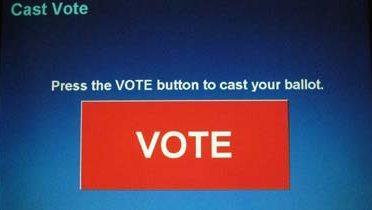We launched the AEI-Brookings Election Reform Project (ERP) in June 2005 with the encouragement and financial support of the John S. and James L. Knight Foundation. Five years later we bring the project to a close. We take this opportunity to reflect on the state of election administration in the United States almost a decade after the extended and controversial Florida vote count in the 2000 presidential election and suggest how additional changes in technology, election law and administrative practices might further strengthen American elections in the years ahead.
The Context
As a consequence of the Florida debacle, most Americans, ourselves included, discovered how little we knew about the myriad ways in which our system of casting and counting votes threatened a bedrock of democracy, namely that those who have a right to vote are able to do so, and have their votes counted accurately. Our uniquely American election administration system – highly decentralized, lacking uniformity within and across states, and predominantly overseen by partisan officials – proved especially vulnerable in the dead-heat Florida contest, where the ultimate outcome determined the next occupant of the White House. One of the most controversial aspects of the disputed Florida vote count was the apparent disparate impact on racial, age, and partisan groups of the mechanics of registration and voting. Wide variation across the states in voting equipment, ballot design, accuracy of registration lists, number and training of poll workers, lines at polling places, the availability of provisional ballots, the treatment of absentee ballots, and procedures for counting and recounting ballots advantaged some groups at the expense of others.
The 2000 experience produced a clarion call to document the flaws and to take decisive steps to ensure that future elections were administered consistent with the very highest standards Americans expect of their democracy. Major news organizations produced a series of informative reports on the nuts and bolts of elections that had seldom before captured the attention and resources of editors and producers. Dozens of national and state commissions, study groups, and committees analyzed shortcomings in the election system and formulated recommendations for improvement. Advocacy groups mobilized to promote changes in election law and practice. Numerous lawsuits were filed to address the problems experienced by different groups of voters. A number of states moved quickly to set new standards for voting equipment and election administration, in some cases providing financial support for machines, poll worker training, and voter education. And after months of study, debate, and uncertainty, Congress passed and President George W. Bush signed into law the Help America Vote Act of 2002 (HAVA), just days before the 2002 midterm elections.
HAVA provided the first major federal financial support for the costs of administering elections historically borne by state and local governments. It authorized $3.86 billion to help states replace punch card and lever voting machines, improve the administration of elections, set up computerized statewide voter registration lists, guarantee certain voter rights (access to voting for persons with disabilities, provisional ballots, and second-chance voting), and meet a number of voting system standards (audit capacity, maximum error rates, definition of what constitutes a legal vote for each type of voting machine used in the state, and multilingual accessibility). HAVA also established the Election Assistance Commission (EAC), the first federal election administration agency. The new law relied largely on the states to achieve uniform and nondiscriminatory administration of federal elections by arming them with resources, information, and authority to implement new federal requirements. Uniformity was sought within, rather than across, states, which were given broad discretion to implement the new requirements to fit their existing electoral systems, intergovernmental arrangements, and political contexts. Those hoping for a fundamental restructuring of administrative authority and responsibility within our federal system – including a single national voter registration list and uniform federal election ballots, voting equipment, and counting procedures – were keenly disappointed. Most analysts, however, believed that a dramatic federalization of election administration was infeasible and that the general approach taken by HAVA made sense.
HAVA implementation was halting. With delays in Washington on appropriations and the appointment of EAC members, states were left with insufficient funding and guidance in developing plans for meeting new federal requirements and upgrading their election systems. Few states had statewide voter registration databases in place for the 2004 election. Many states had new voting machines in some of their polling places, but only a handful eliminated entirely their punch card machines in time for the presidential election. Critics raised questions about the security and integrity of paperless, direct recording electronic (DRE) voting machines, producing controversy that delayed or altered the acquisition of new voting equipment and led to demands for voter-verified paper audit trails. Two other HAVA requirements, part of the delicate partisan compromise needed to enact the new law, created problems of their own. States implemented the provision specifying that individuals arriving at polling places but not appearing on voting rolls were to be issued provisional ballots, which were then to be counted only if it was determined the voters were properly registered. But individual states adopted widely divergent rules for determining which provisional ballots were to be counted. As a consequence there was a significant variance among the states in the percentage of provisional ballots that were counted. Another controversy arose over the new provision requiring first-time voters who registered by mail without providing verification of their identity to show identification at their polling place. A number of states applied the new voter identification requirement to all voters, raising concerns about its disparate impact on groups of voters.
The partial and problematic implementation of HAVA in the 2004 election cycle kept issues of election administration squarely on the public policy agenda. Another electoral meltdown was avoided in 2004, but only barely. A swing of less than 60,000 votes in Ohio would have resulted in post-election chaos. The problems that emerged in the 2004 cycle – difficulties and errors resulting from the flood of new registrants, the large number of provisional ballots not counted in some states, very long lines in some early and election-day precincts, machine counting errors, and reports of vote suppression and fraud – confirmed that many shortcomings remained in our system of election administration. Moreover, the uneven success of states in building computerized registration lists and persistent concerns about new voting equipment ensured continuing turmoil in election policy and administration in Washington and the fifty states.
This was the context in which we launched our Election Reform Project five years ago. Our role was to fill a critical niche in the vast array of organizations and individuals working to improve election administration. We sought to provide a centralizing, coordinating, monitoring, and facilitating presence that worked to ensure that diverse research activities – ranging over such topics as voting technology, provisional ballots, registration, voter identification, state and local administration, vote centers, early and absentee voting, overseas and military absentee voting, poll worker recruitment and training, vote suppression, and voter fraud – were leveraged on behalf of needed improvements in federal and state law and implementation.
We hoped that by facilitating communication among scholars, policymakers, election professionals, journalists and others, we could explore new ideas and innovations in election practices and election administration, focus research findings and election experiences on a post-HAVA agenda, and move elements of that agenda toward serious debate in Congress and implementation in states and localities.
Our goals were tempered by political realities. If the 2004 elections resulted in some serious controversies in close elections at the state and local level, the fact that there was no meltdown comparable to 2000 meant there was little momentum in Congress for revisiting election reform. HAVA was the first serious national effort to revamp our election systems; even after the 2000 debacle, it was extraordinarily difficult to get the law passed with bipartisan support. While there was a generous appropriation attached to HAVA, the bulk of the money went for subsidies to states and localities to purchase electronic voting machines, which themselves immediately became objects of controversy. And states, having spent heavily on the new machines that many subsequently felt obliged to modify or replace, were not eager to invest more on election administration—especially as many elements of HAVA became unfunded mandates.
The Brookings Institution is committed to quality, independence, and impact.
We are supported by a diverse array of funders. In line with our values and policies, each Brookings publication represents the sole views of its author(s).




